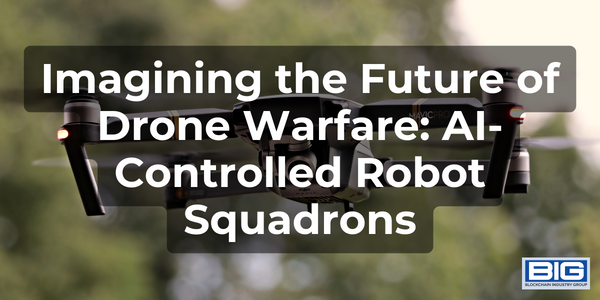
The evolution of drone technology has revolutionized modern warfare, and as advancements in artificial intelligence (AI) continue to unfold, the prospect of AI-controlled robot squadrons taking center stage on the battlefield becomes a captivating and alarming possibility.
In this article, we delve into the imaginary realm of drone warfare in the future, envisioning how such a battle might unfold and examining the implications of AI-driven strategies and tactics.
The Dawn of AI-Controlled Robot Squadrons
In this imagined future scenario, military forces deploy squadrons of robot drones equipped with advanced AI systems to carry out complex and strategic military operations. These AI-controlled drones possess the ability to autonomously communicate, adapt to changing conditions, and collaborate in real-time, potentially revolutionizing the dynamics of warfare.
Phase 1: Intelligence Gathering and Reconnaissance
At the onset of the battle, AI-controlled drones swarm the battlefield, leveraging their advanced sensors and machine learning capabilities to gather crucial intelligence. They conduct comprehensive aerial reconnaissance, scanning the environment, and relaying real-time data to the command center, where AI algorithms analyze the information to identify key targets, vulnerabilities, and optimal strategies.
Example: Swarm Reconnaissance Maneuvers
The AI-controlled drone squadrons seamlessly coordinate their efforts, executing swarm reconnaissance maneuvers. Each drone collects data from multiple angles, cross-referencing and validating the information to create a comprehensive situational analysis. This real-time intelligence provides commanders with invaluable insights into enemy positions, defensive structures, and potential weak points.
Phase 2: Collaborative Tactical Operations
Armed with the intelligence gathered during the reconnaissance phase, the AI-controlled drone squadrons enter the collaborative tactical operations phase. Leveraging their autonomous decision-making capabilities and rapid processing speeds, the drones formulate and execute synchronized strategies to neutralize enemy threats and achieve mission objectives.
Example: Coordinated Target Elimination
The AI systems analyze the collected data, identify high-value targets, and distribute the engagement plan across the drone squadrons. Each drone autonomously selects the most effective approach based on its capabilities and the tactical context. Through collaborative efforts, they coordinate precision strikes, eliminating enemy targets with remarkable speed, accuracy, and efficiency. The AI systems continuously adapt and learn from the evolving battle scenario, ensuring optimal outcomes.
Phase 3: Adaptive Defense and Countermeasures
As the battle intensifies, the AI-controlled drone squadrons demonstrate their adaptability and resilience by swiftly responding to enemy actions and deploying countermeasures. These AI-driven defenses include dynamic evasion maneuvers, electronic warfare techniques, and the ability to recognize and neutralize incoming threats.
Example: Adaptive Countermeasures
When faced with incoming anti-drone systems or adversarial tactics, the AI-controlled drone squadrons autonomously adjust their flight patterns, employ advanced maneuvering techniques, and engage in electronic warfare to disrupt enemy systems. They dynamically assess and respond to emerging threats, utilizing their AI capabilities to outmaneuver and neutralize the opposition.
AI and Robots: Future of Human Companionship?
—
AI Consultancy Services: Top 5 Ideas
—
AI Education Services: Top Markets and Courses
Ethical Considerations and Future Implications
While this imagined scenario of AI-controlled robot squadrons showcases the potential for enhanced battlefield capabilities, it also raises important ethical considerations and future implications. Questions surrounding human oversight, potential AI biases, and the impact on civilian safety and international norms of warfare must be addressed as we navigate the evolution of military technologies.
As the future of drone warfare unfolds, policymakers, military strategists, and society as a whole must actively engage in discussions on regulation, accountability, and responsible use of AI-driven technologies in conflict scenarios. By carefully navigating these challenges, we can strive to achieve a future where the potential of AI-controlled robot squadrons is harnessed in a manner that ensures both military effectiveness and adherence to ethical principles.



